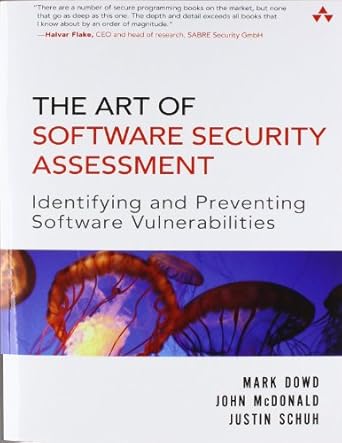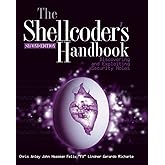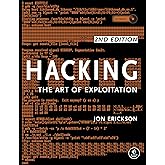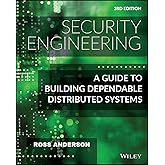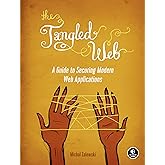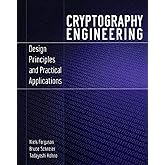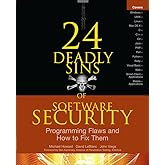
Download the free Kindle app and start reading Kindle books instantly on your smartphone, tablet, or computer - no Kindle device required.
Read instantly on your browser with Kindle for Web.
Using your mobile phone camera - scan the code below and download the Kindle app.
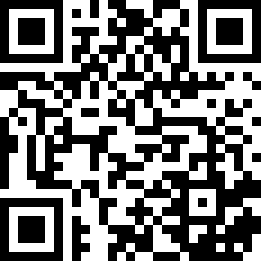
Follow the authors
OK
The Art of Software Security Assessment: Identifying and Preventing Software Vulnerabilities (Volume 1 of 2) 1st Edition
There are a number of secure programming books on the market, but none that go as deep as this one. The depth and detail exceeds all books that I know about by an order of magnitude.
Halvar Flake, CEO and head of research, SABRE Security GmbH
Note: This is now a 2 volume set which is shrink wrapped.
The Definitive Insiders Guide to Auditing Software Security
This is one of the most detailed, sophisticated, and useful guides to software security auditing ever written. The authors are leading security consultants and researchers who have personally uncovered vulnerabilities in applications ranging from sendmail to Microsoft Exchange, Check Point VPN to Internet Explorer. Drawing on their extraordinary experience, they introduce a start-to-finish methodology for ripping apart applications to reveal even the most subtle and well-hidden security flaws.
The Art of Software Security Assessment covers the full spectrum of software vulnerabilities in both UNIX/Linux and Windows environments. It demonstrates how to audit security in applications of all sizes and functions, including network and Web software. Moreover, it teaches using extensive examples of real code drawn from past flaws in many of the industry's highest-profile applications.
Coverage includes
Code auditing: theory, practice, proven methodologies, and secrets of the trade
Bridging the gap between secure software design and post-implementation review
Performing architectural assessment: design review, threat modeling, and operational review
Identifying vulnerabilities related to memory management, data types, and malformed data
UNIX/Linux assessment: privileges, files, and processes
Windows-specific issues, including objects and the filesystem
Auditing interprocess communication, synchronization, and state
Evaluating network software: IP stacks, firewalls, and common application protocols
Auditing Web applications and technologies
This book is an unprecedented resource for everyone who must deliver secure software or assure the safety of existing software: consultants, security specialists, developers, QA staff, testers, and administrators alike.
Contents
ABOUT THE AUTHORS xv
PREFACE xvii
ACKNOWLEDGMENTS xxi
I Introduction to Software Security Assessment
1 SOFTWARE VULNERABILITY FUNDAMENTALS 3
2 DESIGN REVIEW 25
3 OPERATIONAL REVIEW 67
4 APPLICATION REVIEW PROCESS 91
II Software Vulnerabilities
5 MEMORY CORRUPTION 167
6 C LANGUAGE ISSUES 203
7 PROGRAM BUILDING BLOCKS 297
Note: This is now a 2 volume set which is shrink wrapped.
Computer software is an integral part of modern society. Companies rely on applications to manage client information, payment data, and inventory tracking. Consumers use software for a variety of different reasons as well--to manage their daily lives, to communicate with friends and family, and to browse resources made available on the internet, to name a few. With such a heavy reliance on software in our society, questions surrounding the security of the pieces of software performing these various tasks begin to arise. Is the software we are using really secure? How can we verify that it is? And what are the implications of a particular application being compromised? These are some of the questions that this book attempts to address. This book sheds light on the theory and practice of code auditing--how to rip apart an application and discover security vulnerabilities.
Note: This is now a 2 volume set which is shrink wrapped.
Computer software is an integral part of modern society. Companies rely on applications to manage client information, payment data, and inventory tracking. Consumers use software for a variety of different reasons as well--to manage their daily lives, to communicate with friends and family, and to browse resources made available on the internet, to name a few. With such a heavy reliance on software in our society, questions surrounding the security of the pieces of software performing these various tasks begin to arise. Is the software we are using really secure? How can we verify that it is? And what are the implications of a particular application being compromised? These are some of the questions that this book attempts to address. This book sheds light on the theory and practice of code auditing--how to rip apart an application and discover security vulnerabilities.
- ISBN-100321444426
- ISBN-13978-0321444424
- Edition1st
- PublisherAddison-Wesley Professional
- Publication dateJanuary 1, 2006
- LanguageEnglish
- Dimensions7 x 2 x 9 inches
- Print length1174 pages
Customers who viewed this item also viewed
Editorial Reviews
From the Back Cover
There are a number of secure programming books on the market, but none that go as deep as this one. The depth and detail exceeds all books that I know about by an order of magnitude.
Halvar Flake, CEO and head of research, SABRE Security GmbH
The Definitive Insider s Guide to Auditing Software Security
This is one of the most detailed, sophisticated, and useful guides to software security auditing ever written. The authors are leading security consultants and researchers who have personally uncovered vulnerabilities in applications ranging from sendmail to Microsoft Exchange, Check Point VPN to Internet Explorer. Drawing on their extraordinary experience, they introduce a start-to-finish methodology for ripping apart applications to reveal even the most subtle and well-hidden security flaws.
The Art of Software Security Assessment covers the full spectrum of software vulnerabilities in both UNIX/Linux and Windows environments. It demonstrates how to audit security in applications of all sizes and functions, including network and Web software. Moreover, it teaches using extensive examples of real code drawn from past flaws in many of the industry's highest-profile applications.
Coverage includes
Code auditing: theory, practice, proven methodologies, and secrets of the trade
Bridging the gap between secure software design and post-implementation review
Performing architectural assessment: design review, threat modeling, and operational review
Identifying vulnerabilities related to memory management, data types, and malformed data
UNIX/Linux assessment: privileges, files, and processes
Windows-specific issues, including objects and the filesystem
Auditing interprocess communication, synchronization, and state
Evaluating network software: IP stacks, firewalls, and common application protocols
Auditing Web applications and technologies
This book is an unprecedented resource for everyone who must deliver secure software or assure the safety of existing software: consultants, security specialists, developers, QA staff, testers, and administrators alike.
Contents
ABOUT THE AUTHORS xv
PREFACE xvii
ACKNOWLEDGMENTS xxi
I Introduction to Software Security Assessment
1 SOFTWARE VULNERABILITY FUNDAMENTALS 3
2 DESIGN REVIEW 25
3 OPERATIONAL REVIEW 67
4 APPLICATION REVIEW PROCESS 91
II Software Vulnerabilities
5 MEMORY CORRUPTION 167
6 C LANGUAGE ISSUES 203
7 PROGRAM BUILDING BLOCKS 297
8 STRINGS ANDMETACHARACTERS 387
9 UNIX I: PRIVILEGES AND FILES 459
10 UNIX II: PROCESSES 559
11 WINDOW
About the Author
Mark Dowd is a principal security architect at McAfee, Inc. and an established expert in the field of application security. His professional experience includes several years as a senior researcher at Internet Security Systems (ISS) X-Force, and the discovery of a number of high-profile vulnerabilities in ubiquitous Internet software. He is responsible for identifying and helping to address critical flaws in Sendmail, Microsoft Exchange Server, OpenSSH, Internet Explorer, Mozilla (Firefox), Checkpoint VPN, and Microsofts SSL implementation. In addition to his research work, Mark presents at industry conferences, including Black Hat and RUXCON.
John McDonald is a senior consultant with Neohapsis, where he specializes in advanced application security assessment across a broad range of technologies and platforms. He has an established reputation in software security, including work in security architecture and vulnerability research for NAI (now McAfee), Data Protect GmbH, and Citibank. As a vulnerability researcher, John has identified and helped resolve numerous critical vulnerabilities, including issues in Solaris, BSD, Checkpoint FireWall-1, OpenSSL, and BIND.
Justin Schuh is a senior consultant with Neohapsis, where he leads the Application Security Practice. As a senior consultant and practice lead, he performs software security assessments across a range of systems, from embedded device firmware to distributed enterprise web applications. Prior to his employment with Neohapsis, Justin spent nearly a decade in computer security activities at the Department of Defense (DoD) and related agencies. His government service includes a role as a lead researcher with the National Security Agency (NSA) penetration testing teamthe Red Team.
Product details
- Publisher : Addison-Wesley Professional; 1st edition (January 1, 2006)
- Language : English
- Paperback : 1174 pages
- ISBN-10 : 0321444426
- ISBN-13 : 978-0321444424
- Item Weight : 2 pounds
- Dimensions : 7 x 2 x 9 inches
- Best Sellers Rank: #907,664 in Books (See Top 100 in Books)
- #137 in CompTIA Certification Guides
- #1,128 in Software Development (Books)
- #1,356 in Internet & Telecommunications
- Customer Reviews:
About the authors

Discover more of the author’s books, see similar authors, read author blogs and more

Discover more of the author’s books, see similar authors, read author blogs and more
Customer reviews
Customer Reviews, including Product Star Ratings help customers to learn more about the product and decide whether it is the right product for them.
To calculate the overall star rating and percentage breakdown by star, we don’t use a simple average. Instead, our system considers things like how recent a review is and if the reviewer bought the item on Amazon. It also analyzed reviews to verify trustworthiness.
Learn more how customers reviews work on Amazon-
Top reviews
Top reviews from the United States
There was a problem filtering reviews right now. Please try again later.
Top reviews from other countries
Pour preuve, j'en ai fait la commande, j'ai reçu le "Volume 2 of 2" qui commence à la page 559 (chapitre 10), puis après un retour et une nouvelle commande, j'ai cette fois reçu le "Volume 1 of 2", qui commence bien par le début et qui contient l'intégralité du contenu (donc environ 1200 pages). Les 2 volumes ont le même ISBN.
Le problème a bien été remonté à Amazon. Donc attention !
Reviewed in France on May 8, 2019
Pour preuve, j'en ai fait la commande, j'ai reçu le "Volume 2 of 2" qui commence à la page 559 (chapitre 10), puis après un retour et une nouvelle commande, j'ai cette fois reçu le "Volume 1 of 2", qui commence bien par le début et qui contient l'intégralité du contenu (donc environ 1200 pages). Les 2 volumes ont le même ISBN.
Le problème a bien été remonté à Amazon. Donc attention !




Examples are based on conventional technologies which are easy to relate with. I liked the Threat Modelling section particularly.
If you are in any way linked to the software security industry, i.e. work in it or just have an interest, then I can't recommend this book highly enough, I could go into details of each chapter, but you're better getting it and reading it for yourself. Be warned though, it is a mighty tome and requires time and effort, but you will be richly rewarded and much better off for the experience.

